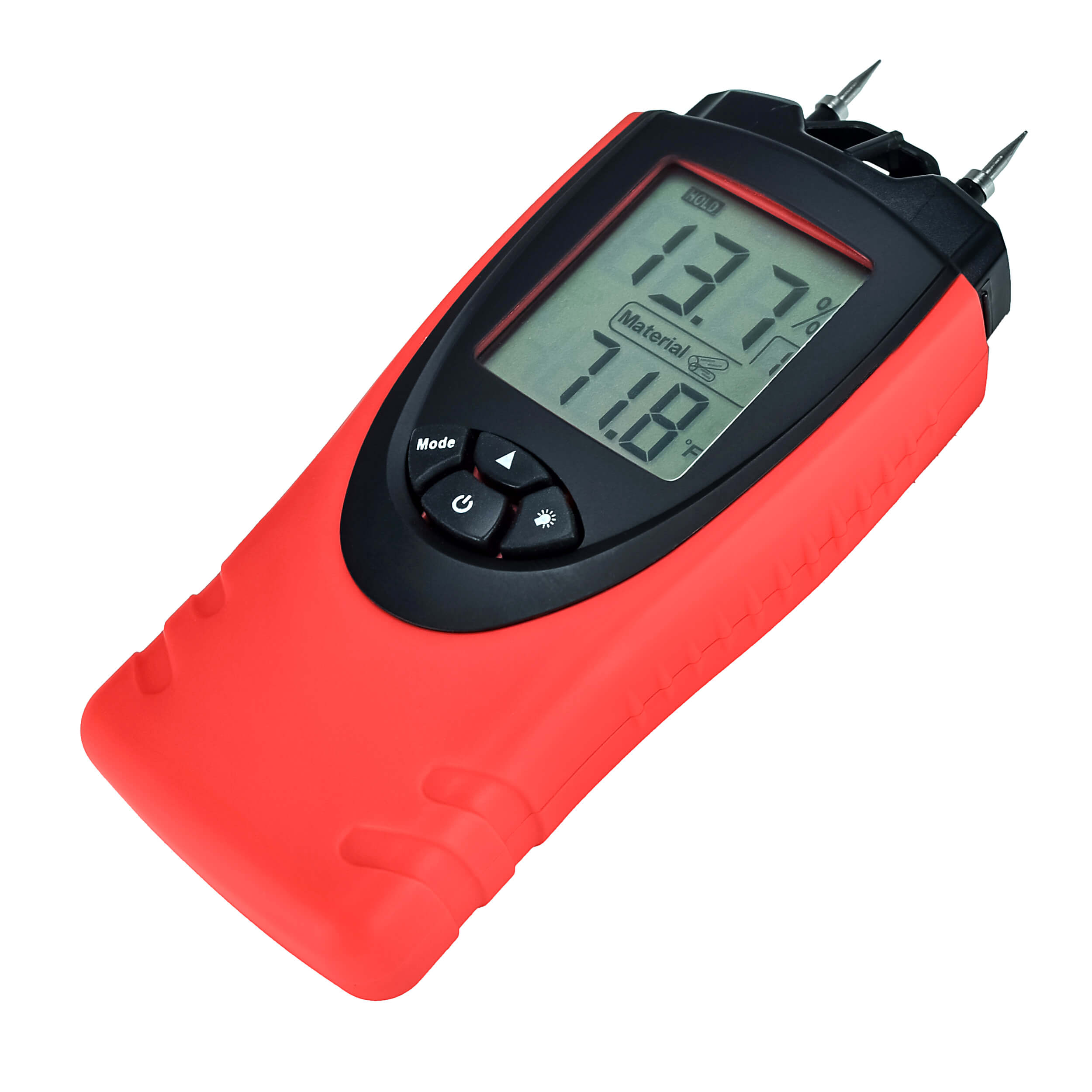Look Into the Globe of Moisture Meters: Whatever You Need to Know
In the world of dampness meters lies a world of precision and practicality that commonly goes unnoticed. Understanding how moisture meters operate, the different kinds available, and their varied usages can lose light on their importance in making sure quality and performance.
How Moisture Meters Work
Moisture meters run by measuring the electric conductivity or capacitance of products to determine the wetness material present. These meters are important devices throughout different sectors, consisting of agriculture, building and construction, and woodworking. By utilizing different methods such as pinless or pin-type innovation, moisture meters provide accurate readings that aid specialists make informed choices.
Pin-type dampness meters work by inserting the sharp pins into the material being checked. The electrical conductivity between the pins is after that determined, with higher dampness levels resulting in increased conductivity. Moisture Meter. On the various other hand, pinless dampness meters utilize electromagnetic signals to scan a larger location without causing any damages to the product's surface area. These meters are excellent for promptly examining dampness levels in large locations or completed products.
No matter the method utilized, dampness meters play a crucial role in avoiding problems such as mold growth, structural damage, or product defects caused by excess dampness. Comprehending how these meters job is essential for guaranteeing the high quality and integrity of materials in various applications.
Sorts Of Moisture Meters
Offered the critical function moisture meters play in different markets, it is important to understand the different kinds offered to professionals for accurately analyzing moisture degrees - Moisture Meter. There are mainly 2 primary kinds of wetness meters: pin-type and pinless wetness meters

On the various other hand, pinless wetness meters use electromagnetic sensor plates to scan a bigger area of the product without creating any damages. This kind appropriates for swiftly scanning huge areas and is generally used for floor covering, wall surfaces, and ceilings. Pinless meters are practical for taking readings on completed surface areas without leaving any noticeable marks.
Both sorts of wetness meters have their advantages and are selected based upon the certain needs of the job at hand. Comprehending the distinctions in between these kinds is important for professionals to make exact dampness analyses.
Applications Throughout Industries
With varied performances, moisture meters locate extensive application across various markets, aiding professionals in guaranteeing optimum problems for structures and materials. In the agriculture market, moisture meters are indispensable for determining the dampness web content in grains, seeds, and hay, making sure quality control and preventing mold growth. Construction experts rely on moisture meters to analyze next page the dampness levels in structure products like wood, concrete, and drywall, which is critical for keeping architectural honesty and stopping concerns like rot or mold and mildew. The floor covering market uses moisture meters to determine the dampness web content in subfloors before mounting numerous flooring, avoiding pricey problems due to excess moisture. In the food sector, wetness meters are used to monitor and control moisture degrees in products such as grains, nuts, and dried fruits to preserve freshness and high quality. Additionally, moisture meters play a crucial duty in the reconstruction and damages evaluation industry by assisting specialists recognize and attend to water damage in buildings without delay. Throughout these varied industries, moisture meters are important devices for ensuring the high quality, security, and durability of different materials and products.
Tips for Making Use Of Moisture Meters
Utilize the dampness meter's calibration setups to ensure exact analyses when measuring the wetness web content in different materials. Furthermore, make certain the meter is established to the right dampness range for the material you are determining to obtain the most exact outcomes.
When utilizing a pin-type dampness meter, place the pins to the appropriate deepness suggested for the material being tested. This makes sure that the moisture readings are drawn from the correct deepness within the product, offering a more exact representation of its dampness material. For pinless moisture meters, remember to maintain correct call with the material's surface area read this post here to get trustworthy readings.
Routinely inspect and replace the batteries in your dampness meter to avoid imprecise analyses due to low power. Store the meter in a dry and safe area when not in usage to extend its life-span and preserve its accuracy. By complying with these tips, you can maximize the performance of your wetness meter and obtain exact wetness material measurements throughout different materials.
Maintenance and Calibration
To ensure the precision of dampness material dimensions, regular upkeep and calibration of the dampness meter are essential actions in its appropriate functioning. Calibration changes the dampness meter to ensure that it offers consistent and reputable outcomes.
Calibration should be carried out periodically, specifically if the dampness meter is utilized frequently or in crucial applications where precise measurements are needed. By calibrating the dampness and keeping meter regularly, individuals can rely on the accuracy of the dampness web content dimensions gotten.
Final Thought

Finally, moisture meters play a vital function in various markets by properly gauging the moisture material of materials. Recognizing just how these tools work, the different kinds offered, and appropriate upkeep and calibration are necessary for acquiring dependable outcomes. Whether in manufacturing, agriculture, or construction, making use of dampness meters assists guarantee quality assurance and efficiency in procedures.

In final thought, wetness meters play a crucial duty in different industries by properly determining the moisture web content of materials.
Comments on “How to Make Use Of a Moisture Meter to Find Concealed Water Damage in Your Property”